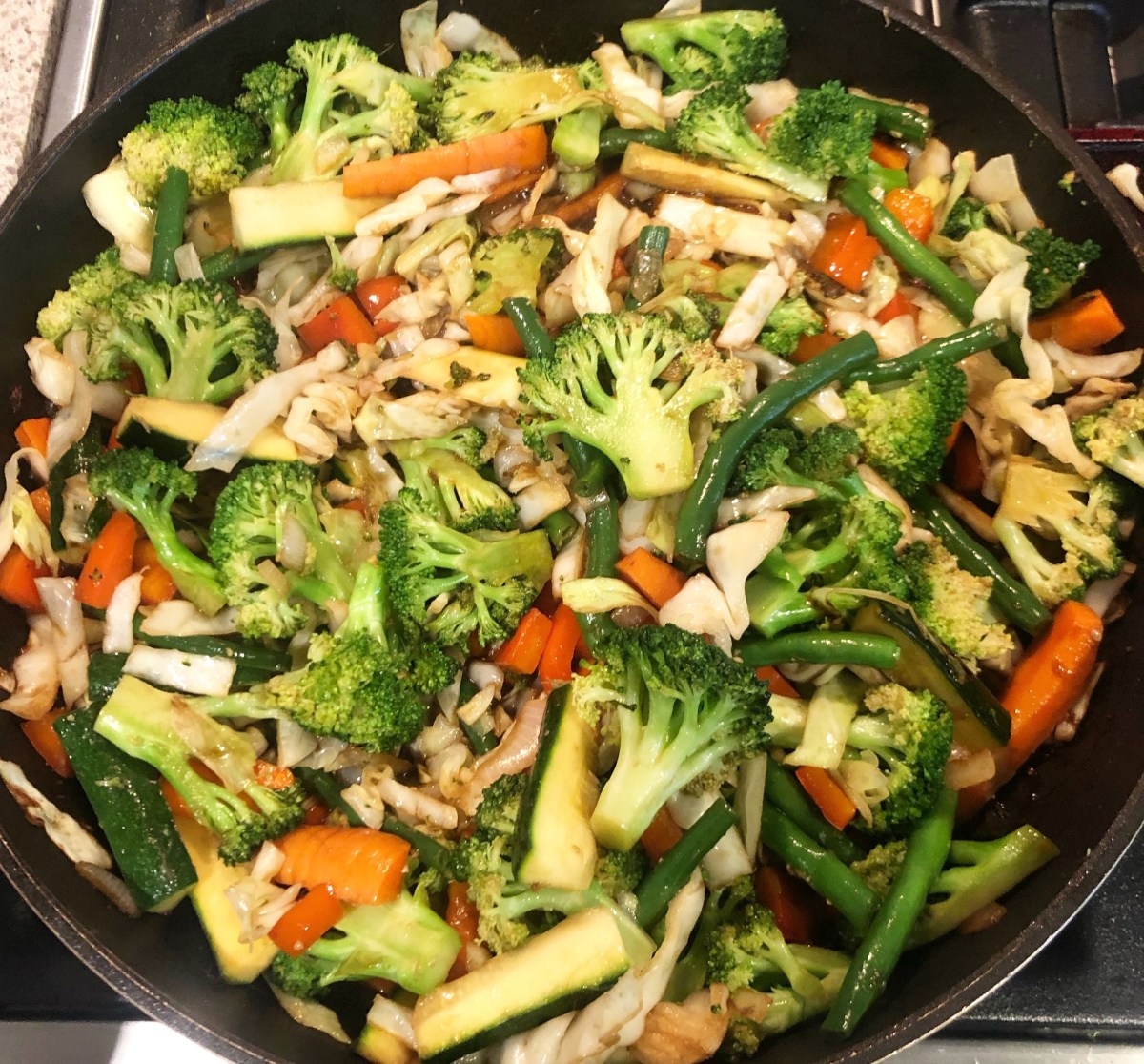Embark on a culinary adventure with vibrant, soy-free stir-fries! This exploration dives deep into the art of creating flavorful and satisfying meals without relying on soy sauce. We’ll uncover the secrets to crafting three unique soy-free stir-fry sauces, each boasting a distinct flavor profile – from subtly sweet to intensely spicy. Imagine the rich tapestry of textures and aromas, from the crisp snap of perfectly julienned vegetables to the tender bite of succulent protein. Get ready to discover a world of flavor possibilities, all while catering to various dietary needs.
This guide unveils a treasure trove of delicious soy-free stir-fry recipes, offering a diverse range of vegetable and protein options to suit your palate. We’ll explore the best preparation techniques to maximize flavor and texture, providing step-by-step instructions and visually descriptive guidance for each stage of the cooking process. Learn how to adapt these recipes to fit your specific dietary preferences, whether you’re vegan, gluten-free, or simply seeking a flavorful and healthy meal. Prepare to be inspired and tantalized by the possibilities!
Vegetable Selection and Preparation for Soy-Free Stir-Fries

Crafting a vibrant and flavorful soy-free stir-fry hinges on selecting the right vegetables and preparing them to maximize their texture and taste. The diverse range of vegetables available allows for endless culinary creativity, ensuring each stir-fry is a unique and satisfying experience. Proper preparation is key to achieving the perfect balance of crispness, tenderness, and vibrant color in your dish.
A well-chosen assortment of vegetables provides not only a delightful array of textures and tastes but also a powerhouse of essential nutrients. The following selection offers a balanced approach to flavor and nutritional value, making your soy-free stir-fry a healthy and delicious meal.
Ideal Vegetables for Soy-Free Stir-Fries
This list highlights ten vegetables particularly well-suited for soy-free stir-fries, considering their texture, flavor, and cooking properties. Each vegetable offers a unique contribution to the overall sensory experience of the dish.
- Broccoli: Firm florets with a slightly sweet and earthy flavor. Offers high levels of vitamin C and fiber.
- Bell Peppers (various colors): Crisp and slightly sweet, with vibrant colors adding visual appeal. Excellent source of vitamin C and antioxidants.
- Snap Peas: Tender and subtly sweet, with a delicate snap. Rich in vitamins K and A.
- Carrots: Slightly sweet and crunchy, offering a pleasant textural contrast. Good source of beta-carotene and fiber.
- Mushrooms (various types): Earthy and umami-rich, with varying textures depending on the type. Excellent source of B vitamins and selenium.
- Zucchini: Mildly sweet and tender, with a soft texture. Good source of vitamin C and potassium.
- Onions: Pungent and savory, adding depth of flavor to the stir-fry. Rich in antioxidants and sulfur compounds.
- Bok Choy: Mildly sweet and slightly peppery, with tender leaves and stalks. Good source of vitamins A, C, and K.
- Snow Peas: Similar to snap peas but with flatter pods and a slightly more delicate flavor. Also rich in vitamins K and A.
- Baby Corn: Sweet and tender, offering a pleasant textural contrast. Good source of fiber and antioxidants.
Vegetable Preparation Techniques
The method of preparation significantly impacts the final texture and cooking time of each vegetable. Careful attention to cutting techniques ensures even cooking and prevents over- or undercooking.
- Broccoli: Cut into bite-sized florets. Larger florets may require slightly longer cooking time.
- Bell Peppers: Cut into thin strips or small dice, depending on preference. Thin strips cook faster.
- Snap Peas: Leave whole or cut in half if large. Their small size ensures quick cooking.
- Carrots: Julienne or thinly slice for quicker cooking; thicker slices require more time.
- Mushrooms: Slice or quarter, depending on size and type. Larger mushrooms may benefit from slicing more thinly.
- Zucchini: Slice into half-moons or dice, depending on the desired texture. Thin slices cook more quickly.
- Onions: Thinly slice or dice, depending on preference. Thinner slices cook faster and become more translucent.
- Bok Choy: Separate leaves and stalks. Cut stalks into smaller pieces for even cooking. Leaves can be added towards the end of cooking.
- Snow Peas: Leave whole or cut in half if large. Similar to snap peas in cooking time.
- Baby Corn: Leave whole or cut in half lengthwise if desired. Their small size ensures quick cooking.
Nutritional Comparison of Selected Vegetables
The vegetables chosen offer a diverse range of vitamins, minerals, and antioxidants. This variety ensures a balanced nutritional profile for your soy-free stir-fry.
For example, broccoli and bell peppers are excellent sources of vitamin C, while carrots provide beta-carotene, a precursor to vitamin A. Mushrooms are a good source of selenium, and leafy greens like bok choy contribute significant amounts of vitamins A and K. The combination of these vegetables creates a nutrient-rich meal, contributing to overall health and well-being.
From the initial sizzle of vegetables in the wok to the final flourish of a perfectly balanced sauce, creating a soy-free stir-fry is an art form. This journey has equipped you with the knowledge and inspiration to craft a symphony of flavors, textures, and aromas. With a palette of diverse vegetables, proteins, and sauces at your disposal, the possibilities are truly endless. Experiment, innovate, and most importantly, savor the delicious results of your culinary creativity. The vibrant world of soy-free stir-fries awaits – explore, and enjoy!
Commonly Asked Questions
Can I use frozen vegetables in soy-free stir-fries?
Yes, frozen vegetables work well in stir-fries. Just ensure they are thoroughly thawed and patted dry before adding them to the wok to prevent excess moisture.
How long can I store leftover soy-free stir-fry?
Leftover stir-fry can be stored in an airtight container in the refrigerator for up to 3-4 days.
What are some good substitutes for soy sauce in stir-fries?
Coconut aminos, tamari (if gluten-free is not a concern), or a combination of rice vinegar, maple syrup, and ginger can be excellent soy sauce substitutes.
Are all stir-fry sauces naturally soy-free?
No, many commercially prepared stir-fry sauces contain soy sauce. Always check the ingredient list to ensure it’s soy-free.


